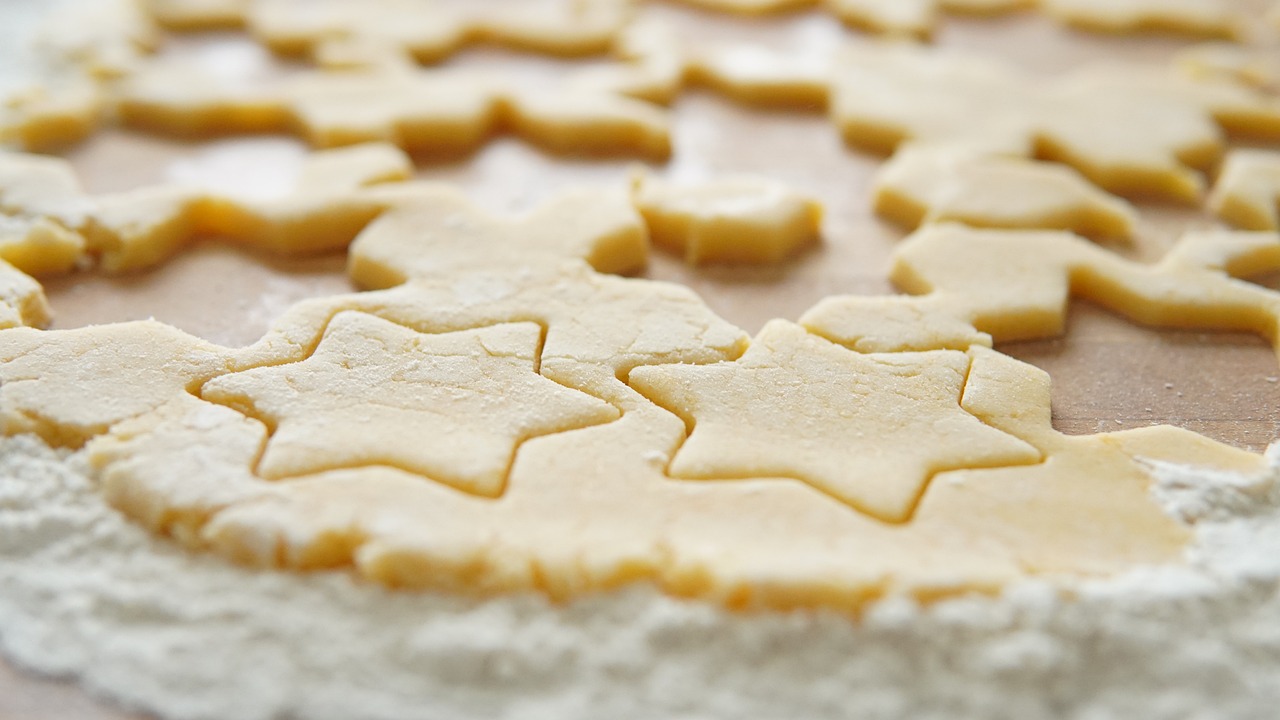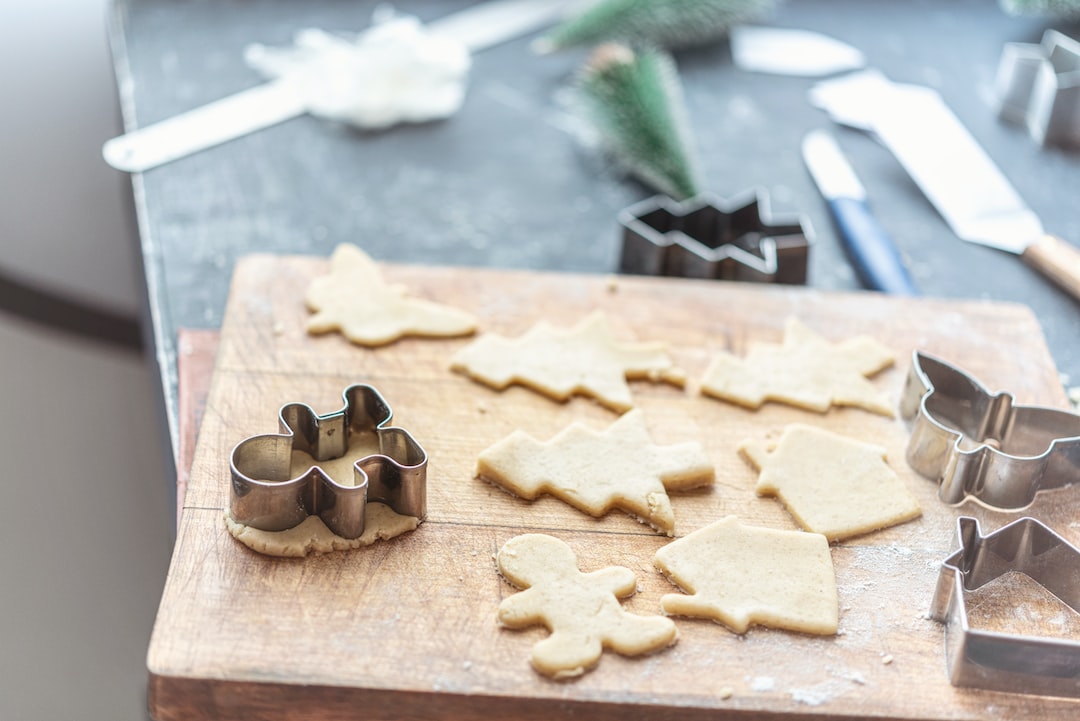
Introduction: The Role of Fats in Achieving Perfect Cookie Texture and Taste
When it comes to baking cookies, fats play a crucial role in determining their texture and taste. The choice of fats can significantly impact the overall quality of the cookies you bake. At The Talkative Cookie Co., we understand the importance of using the right fats to achieve the perfect cookie. In this article, we will explore the different types of fats used in cookie baking, how they affect the texture and taste of cookies, tips for choosing the right fat for your recipe, substitutes for fats in cookie recipes, and more. So let’s dive in and discover the secrets to baking delectable cookies!
Types of Fats Used in Cookie Baking
There are several types of fats commonly used in cookie baking:
- Butter: Butter is a classic choice for baking cookies. It provides a rich flavor and contributes to a tender texture. Butter contains about 80% fat and has a low melting point, resulting in cookies that spread out and have a chewy texture.
- Margarine: Margarine is another popular option that offers a similar texture to butter but with a higher water content. It can result in slightly crisper cookies compared to those made with butter.
- Vegetable Oil: Vegetable oil is a liquid fat that produces cookies with a soft and tender texture. It can make cookies more cake-like due to its liquid form.
- Shortening: Shortening is a solid fat that creates cookies that are tender, light, and crispy. It has a higher melting point than butter, resulting in less spread during baking.
Effects of Fats on Cookie Texture and Taste
The choice of fats in your cookie recipe can have a significant impact on the texture and taste of the final product. Here’s how different fats affect cookies:
- Butter: Butter gives cookies a rich and buttery flavor. It adds moisture and contributes to a soft and chewy texture, making it a popular choice for many cookie recipes.
- Margarine: Margarine imparts a milder taste compared to butter. It can result in slightly crisper cookies due to its higher water content.
- Vegetable Oil: Vegetable oil produces cookies with a moist and tender texture. It can make cookies more cake-like, which is desirable in certain recipes.
- Shortening: Shortening provides a neutral flavor, allowing other ingredients to shine. It creates cookies that are tender and light, with a delicate and crispy texture.
Each type of fat brings its unique characteristics to the cookies, so it’s essential to choose the one that aligns with your desired flavor and texture.
Tips for Choosing the Right Fat for Your Cookie Recipe
When selecting the fat for your cookie recipe, consider the following tips:
- Consider the desired flavor profile: Butter adds richness, margarine provides a milder taste, and vegetable oil offers a neutral flavor.
- Evaluate the desired texture: Butter and margarine result in softer cookies, while vegetable oil can make cookies more cake-like.
- Keep in mind the melting point: Butter and margarine have lower melting points, leading to more spread during baking, while shortening has a higher melting point, resulting in less spread.
- Experiment and adapt: Try different fats in your cookie recipes to discover your preferred texture and taste combination. Don’t be afraid to get creative and find the perfect fat for your unique cookie creations!
By considering these tips, you can choose the right fat that will elevate the texture and taste of your cookies.
This article contains affiliate links and the creator may earn a commission.
Don’t miss out! Click here to buy your equipment on Amazon
Substitutes for Fats in Cookie Recipes
If you’re looking for alternatives to traditional fats in your cookie recipes, here are some substitutes you can try:
- Applesauce: Applesauce can be used as a substitute for fats to reduce the overall fat content in cookies. It adds moisture and tenderness, resulting in a softer texture.
- Yogurt: Yogurt provides a creamy texture to cookies and can be used as a partial or complete substitute for fats. It adds moisture and a tangy flavor to the cookies.
- Mashed Bananas: Mashed bananas work well as a fat substitute in certain cookie recipes. They add natural sweetness and moisture, resulting in slightly denser cookies.
These substitutes can be a great option if you’re looking to reduce the fat content in your cookies or experiment with different flavors and textures.
Tips for Achieving the Perfect Cookie Texture
Achieving the perfect cookie texture goes beyond choosing the right fats. Here are some additional tips to help you achieve the ideal texture in your cookies:
- Use granulated sugar for a crisper texture and brown sugar for a chewier texture.
- Adjust the baking time and temperature to achieve the desired texture. Baking for slightly longer can result in crispier cookies.
- Be mindful of the mixing technique. Overmixing can lead to tougher cookies, while undermixing can result in cookies that spread too much.
By paying attention to these tips, you can fine-tune your baking process and create cookies with the perfect texture.
Baking with Different Fats: Comparisons and Results
To truly understand the impact of fats on cookie texture and taste, conducting side-by-side experiments using different fats in identical cookie recipes can be enlightening. By comparing the texture, taste, and appearance of cookies made with butter, margarine, vegetable oil, and shortening, you can gain a better understanding of the strengths and weaknesses of each fat in achieving specific cookie characteristics.
Through these experiments, you may discover your personal preferences for different types of cookies and find the perfect fat to use in your baking endeavors.
Conclusion: Elevate Your Cookie Baking with the Right Choice of Fats
Fats play a vital role in achieving the perfect texture and taste in cookies. By understanding the different types of fats used in cookie baking and how they affect the final product, you can elevate your cookie baking game. Remember to consider the desired flavor profile, evaluate the desired texture, and be open to experimentation with different fats and fat substitutes. With the right choice of fats, you can create cookies that are a delight to the taste buds and a feast for the eyes.
For more delicious dessert ideas, recipes, and baking resources, visit The Talkative Cookie Co. Www.thetalkativecookieco.com. Happy baking!
This article contains affiliate links and the creator may earn a commission.
Don’t miss out! Click here to buy your equipment on Amazon
References
. (2023). “The Role of Fats in Cookie Baking.” The Talkative Cookie Co. Website. Retrieved from https://www.thetalkativecookieco.com/

